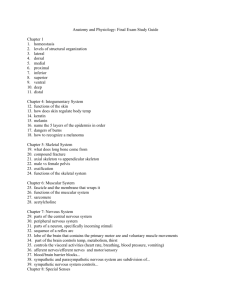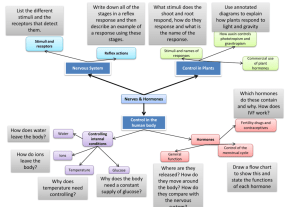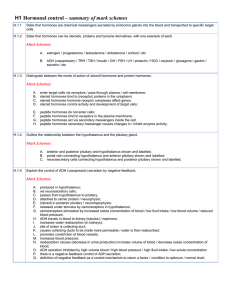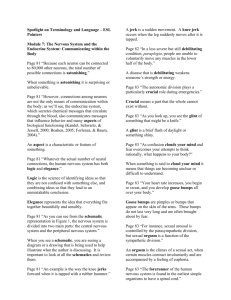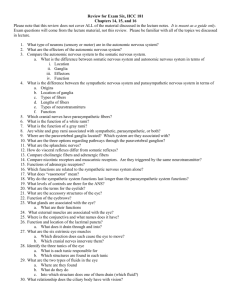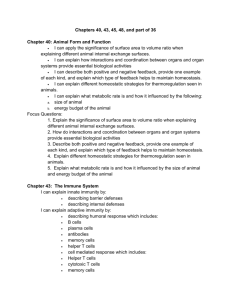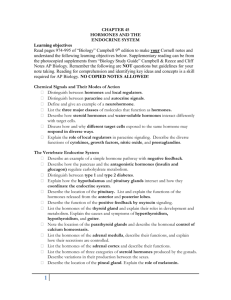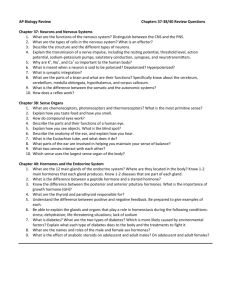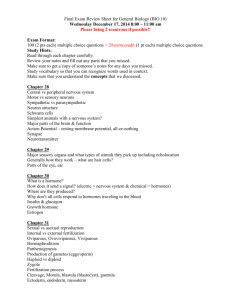Chapter 15: Chromosomal Basis of Inheritance
advertisement
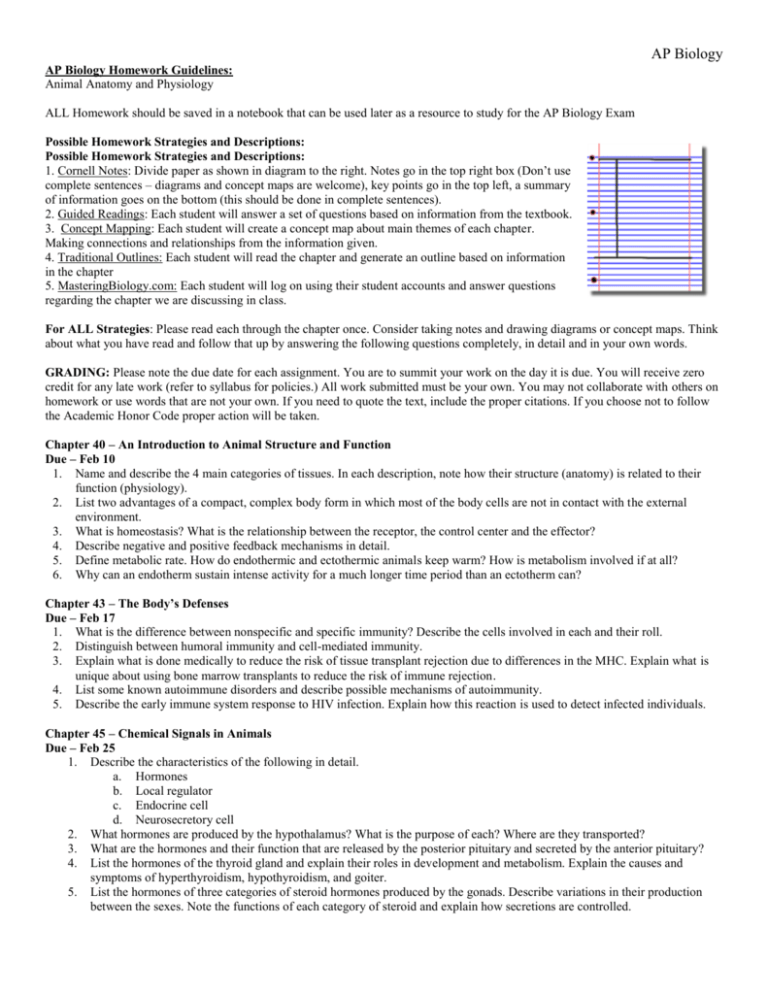
AP Biology AP Biology Homework Guidelines: Animal Anatomy and Physiology ALL Homework should be saved in a notebook that can be used later as a resource to study for the AP Biology Exam Possible Homework Strategies and Descriptions: Possible Homework Strategies and Descriptions: 1. Cornell Notes: Divide paper as shown in diagram to the right. Notes go in the top right box (Don’t use complete sentences – diagrams and concept maps are welcome), key points go in the top left, a summary of information goes on the bottom (this should be done in complete sentences). 2. Guided Readings: Each student will answer a set of questions based on information from the textbook. 3. Concept Mapping: Each student will create a concept map about main themes of each chapter. Making connections and relationships from the information given. 4. Traditional Outlines: Each student will read the chapter and generate an outline based on information in the chapter 5. MasteringBiology.com: Each student will log on using their student accounts and answer questions regarding the chapter we are discussing in class. For ALL Strategies: Please read each through the chapter once. Consider taking notes and drawing diagrams or concept maps. Think about what you have read and follow that up by answering the following questions completely, in detail and in your own words. GRADING: Please note the due date for each assignment. You are to summit your work on the day it is due. You will receive zero credit for any late work (refer to syllabus for policies.) All work submitted must be your own. You may not collaborate with others on homework or use words that are not your own. If you need to quote the text, include the proper citations. If you choose not to follow the Academic Honor Code proper action will be taken. Chapter 40 – An Introduction to Animal Structure and Function Due – Feb 10 1. Name and describe the 4 main categories of tissues. In each description, note how their structure (anatomy) is related to their function (physiology). 2. List two advantages of a compact, complex body form in which most of the body cells are not in contact with the external environment. 3. What is homeostasis? What is the relationship between the receptor, the control center and the effector? 4. Describe negative and positive feedback mechanisms in detail. 5. Define metabolic rate. How do endothermic and ectothermic animals keep warm? How is metabolism involved if at all? 6. Why can an endotherm sustain intense activity for a much longer time period than an ectotherm can? Chapter 43 – The Body’s Defenses Due – Feb 17 1. What is the difference between nonspecific and specific immunity? Describe the cells involved in each and their roll. 2. Distinguish between humoral immunity and cell-mediated immunity. 3. Explain what is done medically to reduce the risk of tissue transplant rejection due to differences in the MHC. Explain what is unique about using bone marrow transplants to reduce the risk of immune rejection. 4. List some known autoimmune disorders and describe possible mechanisms of autoimmunity. 5. Describe the early immune system response to HIV infection. Explain how this reaction is used to detect infected individuals. Chapter 45 – Chemical Signals in Animals Due – Feb 25 1. Describe the characteristics of the following in detail. a. Hormones b. Local regulator c. Endocrine cell d. Neurosecretory cell 2. What hormones are produced by the hypothalamus? What is the purpose of each? Where are they transported? 3. What are the hormones and their function that are released by the posterior pituitary and secreted by the anterior pituitary? 4. List the hormones of the thyroid gland and explain their roles in development and metabolism. Explain the causes and symptoms of hyperthyroidism, hypothyroidism, and goiter. 5. List the hormones of three categories of steroid hormones produced by the gonads. Describe variations in their production between the sexes. Note the functions of each category of steroid and explain how secretions are controlled. Chapter 47 – Animal Development Due – Feb 27 1. Explain the importance of embryo polarity during cleavage. Compare the characteristics of the animal hemisphere, vegetal hemisphere, and gray crescent in amphibian embryos. 2. Describe the role of changes in cell shape and cell position during embryonic development. Explain how these cellular processes occur. Describe the process of convergent extension. 3. Describe the two general principles that integrate our knowledge of the genetic and cellular mechanisms underlying differentiation. 4. Explain how a limb bud is directed to develop into either a forelimb or hind limb. Chapter 48 – Nervous System Due – March 6 1. Describe the three major functions of the nervous system. 2. Compare the location of the cell bodies of motor neurons, interneurons, and sensory neurons. Distinguish between ganglia and nuclei. 3. Explain why physiologists often study the nervous systems of invertebrates. 4. Distinguish between gated and ungated ion channels and between chemically gated ion channels and voltage-gated ion channels. 5. Describe the factors that affect the speed of action potentials along an axon and describe adaptations that increase the speed of propagation. 6. Compare and contrast the nervous systems of the following animals and explain how variations in design and complexity relate to their phylogeny, natural history, and habitat: hydra, sea star, planarian, insects, mollusks, and vertebrates. 7. Describe the structures and functions of the following brain regions: medulla oblongata, pons, midbrain, cerebellum, thalamus, epithalamus, hypothalamus, and cerebrum. *Animal Test: March 10 *Dates subject to change
